BOOK AN APPOINTMENT
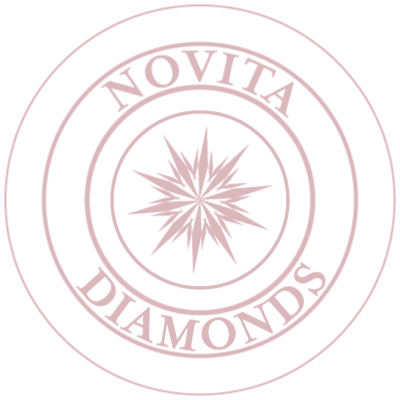

If you are considering buying a lab diamond, you should be well informed about the factors that determine diamond quality. Understanding the 4C’s (Cut, Colour, Clarity, and Carat) will empower your shopping experience and help you choose a diamond that is lustrous, sparkly, high quality, and affordable. Hence, we have compiled this guide to assist you.
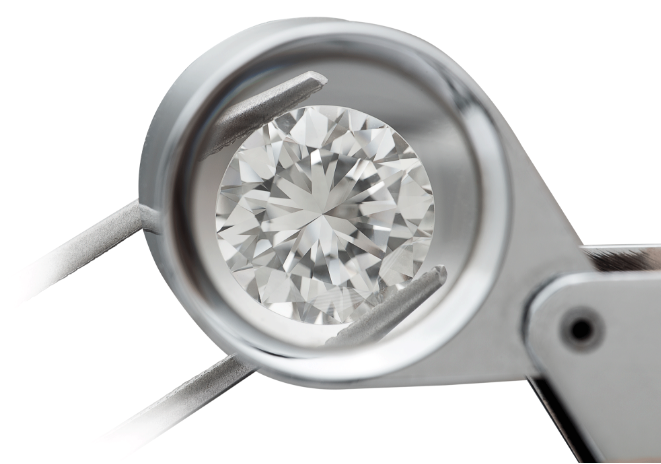
There is a difference between Carat and Size, although people often confuse them. In diamonds, size refers to the measurement in millimetres, while carat refers to its weight in grams.
Have trouble understanding the carat unit? Here’s an example. Let’s say we have two diamonds that are each 1 carat. If the first one is cut very deep, it will look closer to a 0.80ct stone than an average 1ct one. Alternatively, if the second one is cut very shallow, its size may look closer to a 1.25ct gemstone, but its quality may suffer. In other words, in order for 1ct diamonds to look good, they also need to weigh 1ct.
Whenever diamonds are cut too deeply or too shallow, the quality is always compromised, resulting in the diamond not achieving its full brilliance and sometimes looking dark or lifeless throughout.

The first of the 4 Cs is Clarity, which refers to the diamond’s ‘clearness’. Depending on the Clarity grade, impurities (inclusions) can be found in greater or lesser quantities.
It is the highest grade a diamond can achieve when it comes to clarity. The FL and IF classifications of diamonds are denoted by the lack of visible inclusions inside the stone even when viewed through a microscope at 10x magnification. In contrast to Flawless (FL) diamonds, Internally Flawless (IF) diamonds can have some surface marks (blemishes) under 10x magnification.
The next highest clarity grades are VVS1 and VVS2. The very tiny inclusions in VVS1 and VVS2 diamonds are very difficult, even to gemologists and diamond experts, to see under 10x magnification, despite being a lower tier than FL and IL. Among the inclusions that may appear in a VVS diamond are pinpricks, needles, or internal graining.
Diamonds of the VS1 and VS2 grades are still eye-clean, even though they are lower grades than VVS1 and VVS2. Diamonds with VS1 and VS2 clarity have slightly larger inclusions compared to diamonds with VVS clarity. When viewed at 10x magnification, inclusions are still fairly difficult to spot in (VS1), but somewhat easier in (VS2). The inclusions present in VS diamonds are crystals, cavities, or clouds.
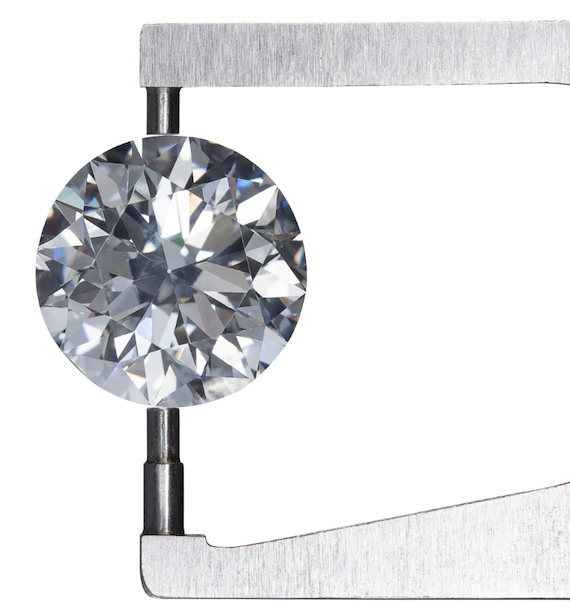
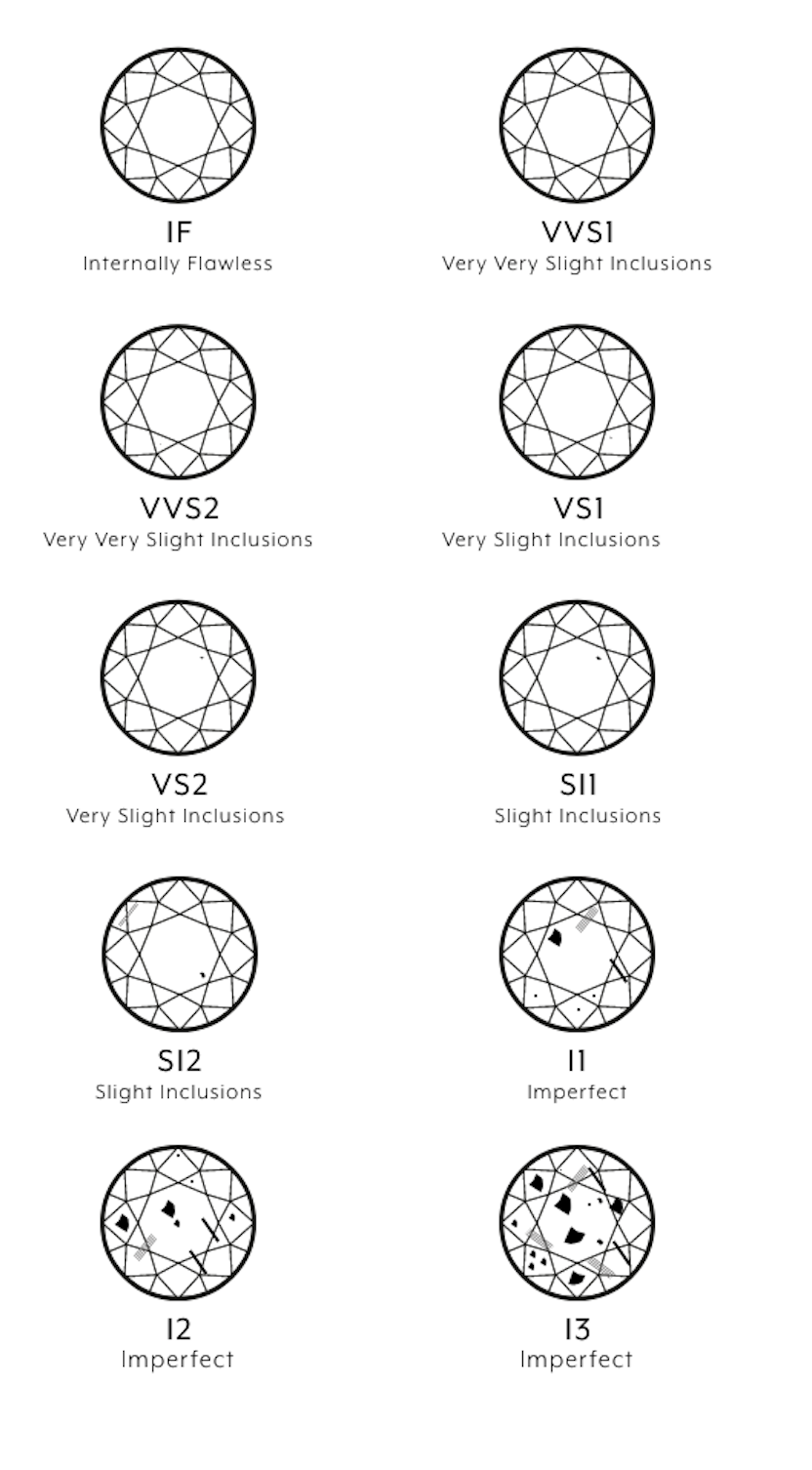
The inclusions in SI1 and SI2 clarity diamonds are more prominent than those in VS and VVS clarity diamonds. When viewed at 10x magnification, these inclusions are easily visible to the trained eye. Among the inclusions that might occur in a SI diamond are chips, knots, and feathers.
Those with clarity grades I1-I3 fall at the bottom of the diamond clarity grading scale. Inclusions are much more pronounced and can easily be seen with the naked eye. When a diamond has large inclusions like those found in clarity I, its brilliance may be affected.
Novita’s Recommendation:Our recommendation at Novita Diamonds is to always get the finest looking diamond for your budget. Therefore we recommend IF, VVS1, VVS2, VS1, VS2 and SI1 as they all have inclusions not visible to the naked eye.
Among the 4Cs, colour is the easiest to understand. A diamond’s colour grade indicates how colourless it is. Diamonds with no colour shine brightest, allowing their brilliance to shine through. Stones that are whiter, or, to put it more precisely, clearer, are more valuable. As the colour grade decreases, hues of other colours, such as yellow and brown, become more noticeable, lowering the diamond’s value. In GIA’s system, diamonds are graded from D (colourless) through Z (light yellow or brown). As diamonds with a 1 or 2 colour grade difference may appear similar to the untrained eye, grade differences are typically separated by distinct tiers.


D,E,F (colourless)
How are D-F grade diamonds classified? They consist of the highest color grade and are also the rarest. Because D and F diamonds are colourless, they are extremely clear and bright, and they do not contain any yellow or brown tint whatsoever. D and F are categorized as colourless because when placed in a setting, both stones appear the same. In order to distinguish a D diamond from an F diamond, both stones must be loose and placed on a white background.
G,H (near colourless)
How do diamonds of G-H grade differ from diamonds of higher grades? The grades G-H are considered close to colourless and are almost as good as D and F. Even though they have a very slight tint of colour, they are not readily visible to the naked eye. If placed in a setting, they will appear white and still look colourless. The very slight tint in the stones will, however, only be visible when they are loose and compared to colourless diamonds.
I,J (very faint Colour)
Which diamonds are graded I-J? In comparison with the earlier two tiers, these stones are more common and of lower quality, having a very faint colour. Compared to diamonds in the colourless or nearly colourless categories, I-J diamonds have a more noticeable yellow, brown, or grey tint. If the diamond’s colour is lower than a J, it will have a distinctly yellow, brown, or grey tint.
A recommendation from NOVITA: Due to their clarity and colourlessness, D-F colour diamonds appear very similar to each other to the untrained eye; therefore, there is no compelling reason to choose a D over an E or F, outside of personal preference. When the diamond’s colour is at least F or higher, more of the budget can be allocated to getting a bigger diamond, which is more important, or a better cut.
Even though G-H colour diamonds are relatively affordable and plentiful, they are also near colourless, making them a good affordable choice and the best ‘budget’ option. Due to the considerable savings from purchasing G-H diamonds, a much larger stone is possible than it would have been with a D-F diamond.
Recommended by NOVITA: You can save money or get a larger stone by going for diamonds D-G in Colour.
The Cut grade is the last and most important of the 4C’s. There can be no doubt that the Cut of a diamond is of utmost importance, as it has the greatest influence on its appearance. There is a direct relationship between the Cut of diamonds and the sparkle, fire, and brilliance they exhibit. In the case of an incorrectly proportioned diamond, i.e. one that is cut too deep or too shallow, the light will leak out of the bottom of the stone. It is important for light entering a diamond to bounce back up and not leak out the bottom or sides, which would render it dull and lifeless. Diamonds that are cut properly are brilliant in appearance. The light that enters a well-cut diamond reflects off all the sides, or the diamonds’ facets, and comes straight back up, imparting in the diamond a scintillating and otherworldly appearance. In fact, the Cut is so critical to a diamond’s appearance that even a diamond of exceptional quality can seem dull and lifeless if its grade is not high enough.
Recommended by NOVITA: Select only diamonds with Ideal Cut or Excellent Cut.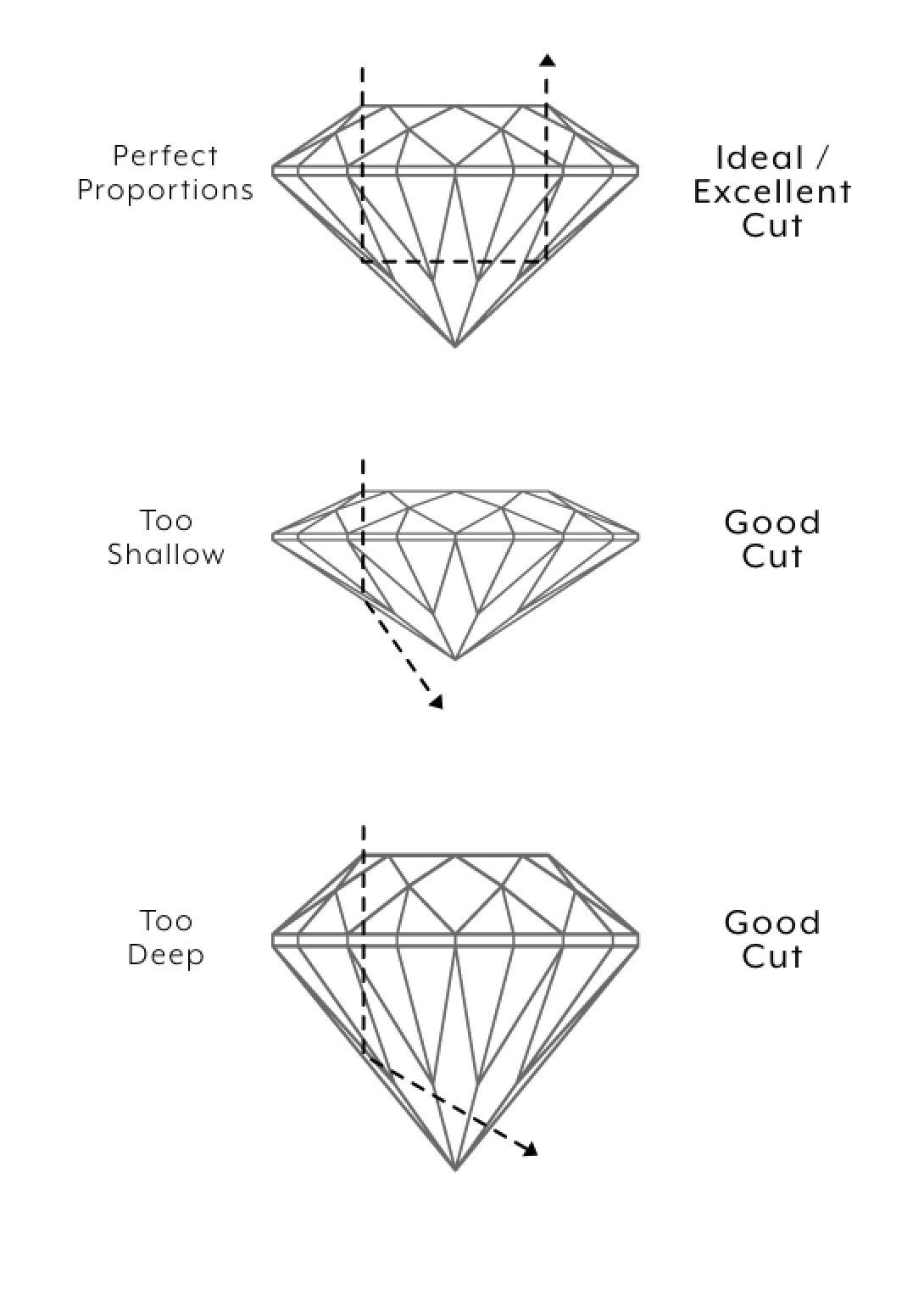
If you or someone you love is looking for a lab grown diamond, we highly recommend you come into our showroom to get further guidance. Our expert gemmologists have hand-picked the showroom options in order to ensure that only the highest quality diamonds are available for you to view at your appointment and to purchase online. After our gemmologists sort through hundreds of diamonds, we only select the best diamonds in every colour and clarity category.
As shown in the image below, you can filter diamonds by their 4Cs category on our Novita website.
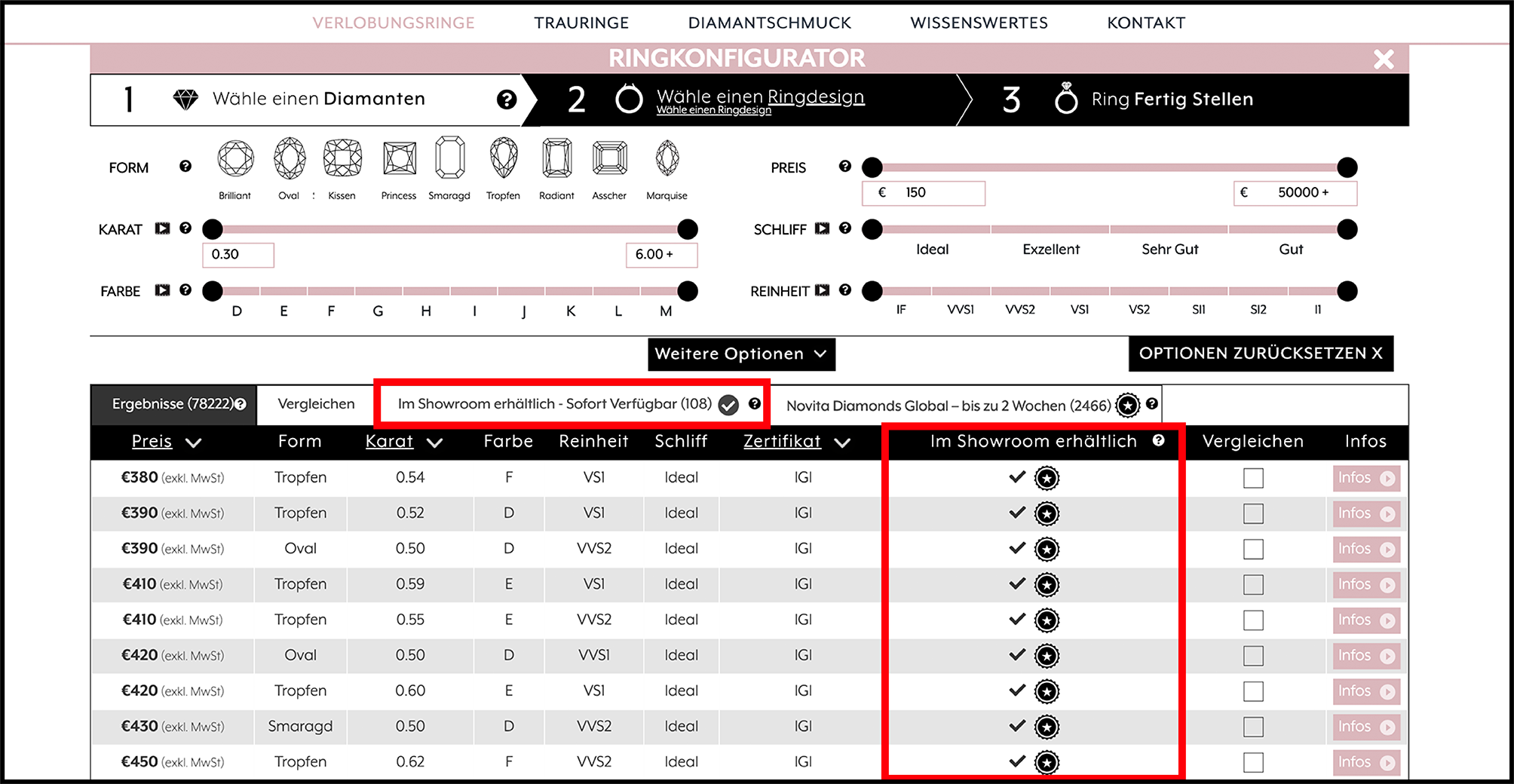
Select ‘AVAILABLE IN SHOWROOM’ in the tab menu and check ‘SHOWROOM’ in the column to further filter our available diamonds.